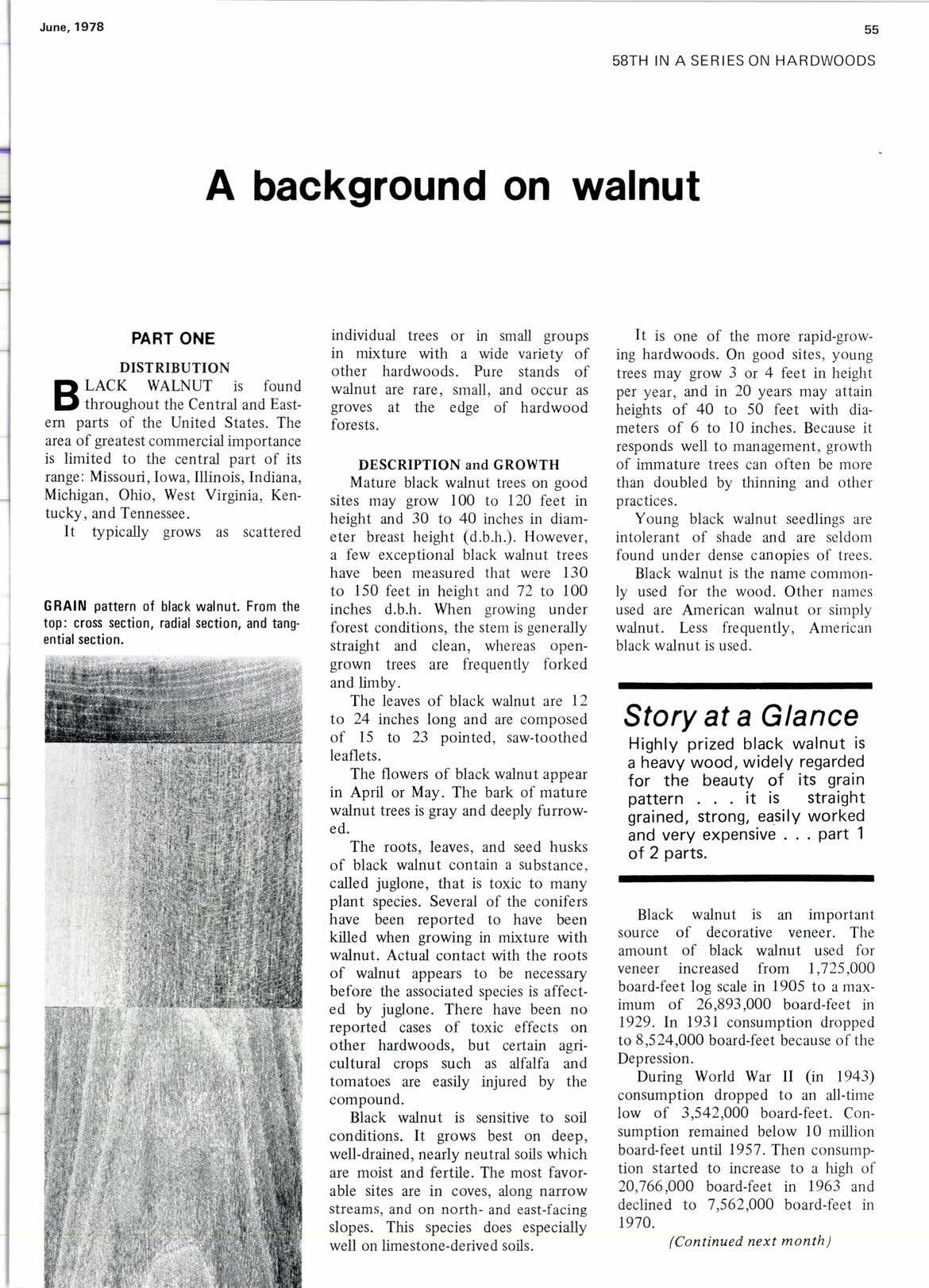
2 minute read
A background on walnut
Part One Distribution
LACK WALNUT is found throughout the Central and Eastem parts of the United States. The area of greatest commercial importance is limited to the central part of its range: Missouri, Iowa, Illinois, Indiana, Michigan, Ohio, West Virginia, Kentucky, and Tennessee.
It typically grows as scattered individual trees or in small groups in mixture with a wide variety of other hardwoods. Pure stands of walnut ate rare, small, and occur as groves at the edge of hardwood forests.
DESCRIPTION and GROWTH
Mature black walnut trees on good sites may grow 100 to 120 feet in height and 30 to 40 inches in diameter breast height (d.b.h.). However, a few exceptional black walnut trees have been measured that were 130 to 150 feet in height and 72 to IOO inches d.b.h. When growing under forest conditions, the stem is generally straight and clean, whereas opengrown trees are frequently forked and limby.
The leaves of black walnut are 12 to 24 inches long and are composed of l5 to 23 pointed, saw-toothed leaflets.
The flowers of black walnut appear in April or May. The bark of mature walnut trees is gray and deeply furrowed.
The roots, leaves, and seed husks of black walnut contain a substance, called juglone, that is toxic to many plant species. Several of the conifers have been reported to have been killed when growing in mixture with walnut. Actual contact with the roots of walnut appears to be necessary before the associated species is affected by juglone. There have been no reported cases of toxic effects on other hardwoods, but certain agricultural crops such as alfalfa and tomatoes are easily injured by the compound.
Black walnut is sensitive to soil conditions. It grows best on deep, well-drained, nearly neutral soils which are moist and fertile. The most favorable sites are in coves, along narrow streams, and on north- and east-facing slopes. This species does especially well on limestone-derived soils.
It is one of the more rapid-growing hardwoods. On good sites, young trees may grow 3 or 4 feet in height per year, and in 20 years may attain heights of 40 to 50 feet with diameters of 6 to 10 inches. Because it responds well to management, growth of immature trees can often be more than doubled by thinning and other practices.
Young black walnut seedlings are intolerant of shade and are seldom found under dense canopies of trees.
Black walnut is the name commonly used for the wood. Other names used are American walnut or simply walnut. Less frequently, American black walnut is used.
Story at a Glance
Highly prized black walnut is a heavy wood, widely regarded for the beauty of its grain pattern it is straight grained, strong, easilY worked and very expensive . . part 1 of 2 parts.
Black walnut is an important source of decorative veneer. The amount of black walnut used for veneer increased from 1,125,000 board-feet log scale in 1905 to a maximum of 26,893,000 board-feet in 1929. ln l93l consumption dropped to 8,524,000 board-feet because of the Depression.
During World War II (in 1943) consumption dropped to an all-time low of 3,542,000 board-feet. Consumption remained below l0 million board-feet until 1957. Then consumption started to increase to a high of 20,766,000 board-feet in 1963 and declined to 7,562,000 board-feet in 1970.
(Continued next month)










